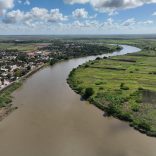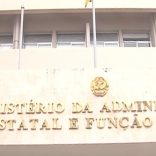Mozambique: PRM confirms murder of UIR agent
Heavy rains have not solved Maputo’s water crisis

CoM (file photo)
Heavy rains fell across virtually all of Mozambique over the past ten days, according to the National Meteorology Office (INAM) – with the crucial exception of the far south, which is in desperate need of rain.
Figures announced at a Wednesday meeting in Maputo of the Disaster Management Technical Council (CTGD) showed that in the ten day period most of the country received between 300 and 600 millimeters of rain. There were torrential downpours in Maputo and the neighboring city of Matola on Sunday night and Monday morning – 130 millimeters fell on Maputo in 24 hours.
But this did very little to improve the water supply crisis for the Greater Maputo Metropolitan Area. Maputo and Matola are dependent for drinking water on the reservoir at the Pequenos Libombos dam on the Umbeluzi river, and the recent downpours have scarcely touched the upper Umbeluzi valley in Namaacha district, and in neighboring Swaziland.
The surface of the reservoir should be at an elevation of 48 meters above sea level – but it is currently at only 33 meters above sea level. Recent rains have made a difference of “just a few centimeters”, according to Rute Nhamucho, of the National Directorate of Water Resources (DNRH).
The reservoir remains just 13 per cent full, and is discharging water at the rate of two cubic meters a second. The normal rate would be at least three cubic meters a second – but if water left the reservoir at that rate, the reservoir would be completely dry by July.
The Maputo Regional Water Company (AdeM) has banned the use of Umbeluzi water for irrigation, construction and all purposes other than human consumption. It has also rationed supplies – each neighbourhood in Maputo and Matola cities and the district of Boane receives water on alternate days. AdeM hopes that these restrictions will be enough until the next rainy season, beginning in October, replenishes the reservoir.
But the DNRH’s calculations show that, even if discharges are reduced to 1.5 cubic meters a second, the Pequenos Libombos reservoir will run out of water by September. There is also no guarantee that the next rainy season will bring the amounts of water needed.
Alternative sources of water are under consideration. Water could be brought to Maputo from the Incomati basin, and engineering work is currently under way to improve the Corumana dam on the Incomati’s main tributary, the Sabie river. When the Moamba Major dam is built on the Incomati, its reservoir could also supply water to the capital. But these are long term solutions.
There are also sources of ground water that could be considered. The most productive aquifers near Maputo are in Marracuene and Manhiça districts, respectively 30 and 80 kilometers to the north. But flows from aquifers are measured, not in cubic meters per second, but in cubic meters per hour, and there is no infrastructure currently in place to pump and move the water.
As for the rest of the country, it has been raining steadily in Gaza and Inhambane provinces, and throughout central Mozambique. The forecast for the rest of the month is continued rain, particularly in the Zambezi valley.
Several rivers have reached alert level – notably the Limpopo in Gaza, and the Pungue and Buzi in Sofala, but are not expected to cause any serious flooding. On the country’s largest river, the Zambezi, the reservoir at the Cahora Bassa dam is only 42 per cent full. The dam is discharging 1,500 cubic meters a second – which is enough to keep the turbines operating and generating power.













Leave a Reply
Be the First to Comment!
You must be logged in to post a comment.
You must be logged in to post a comment.